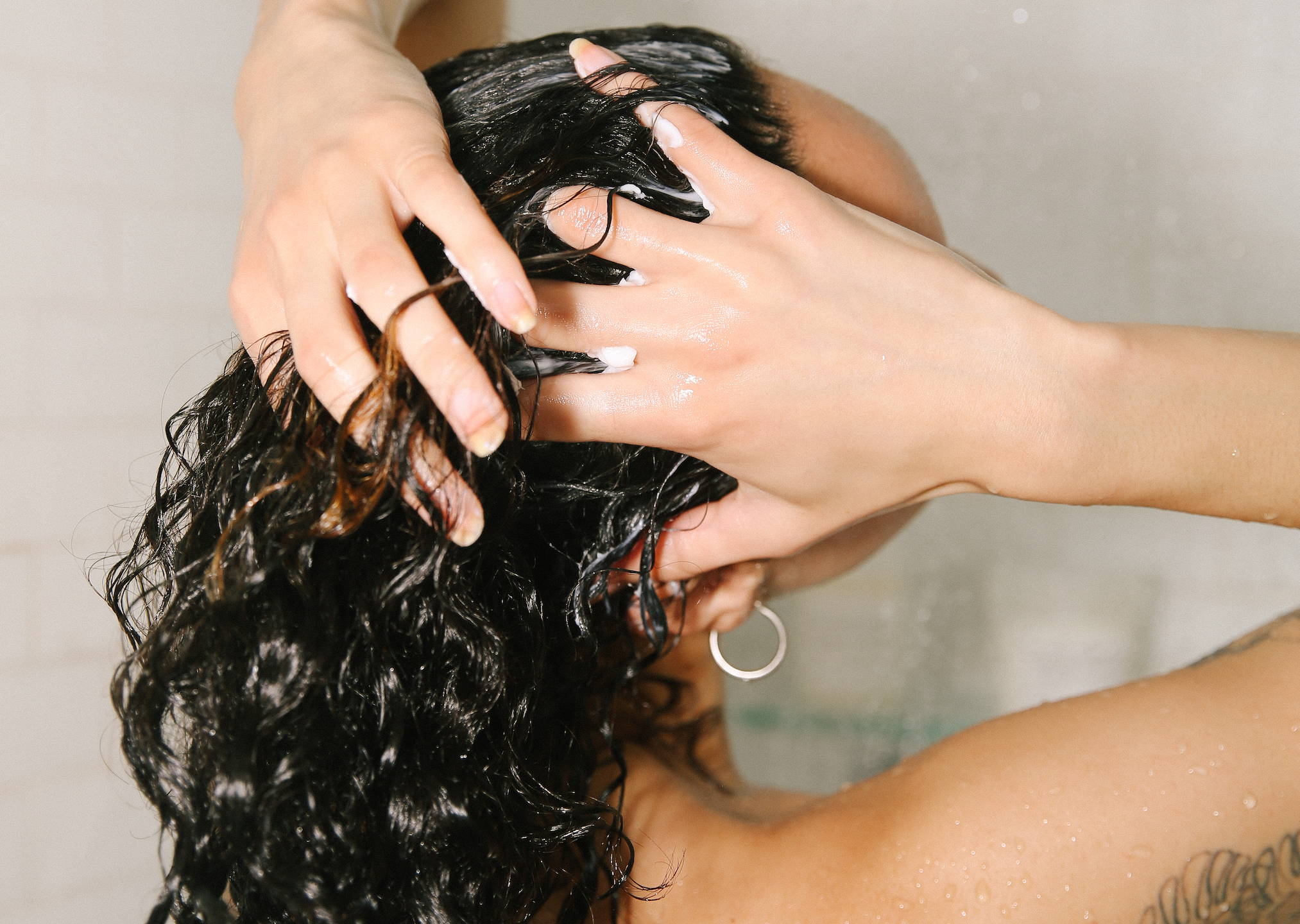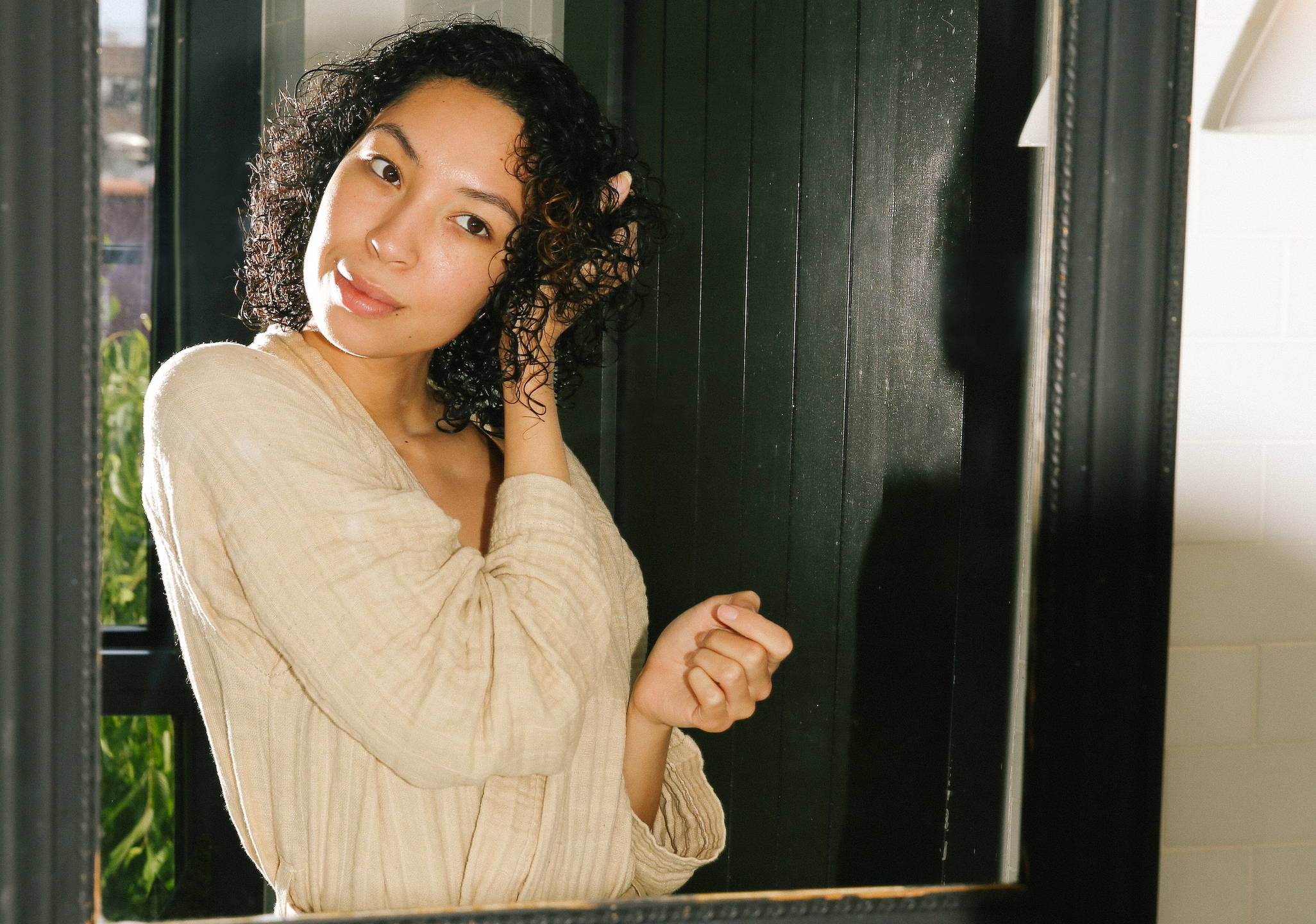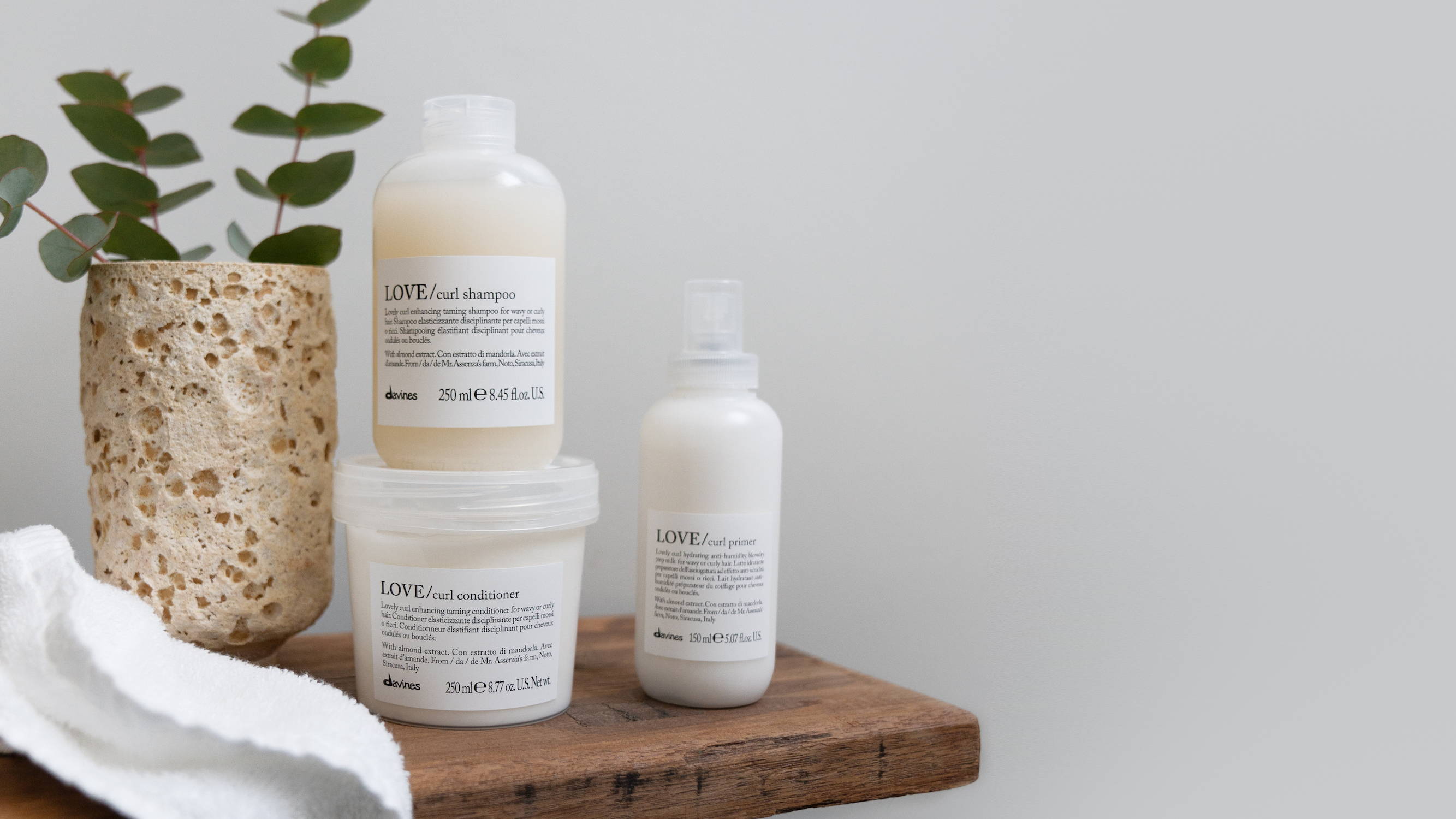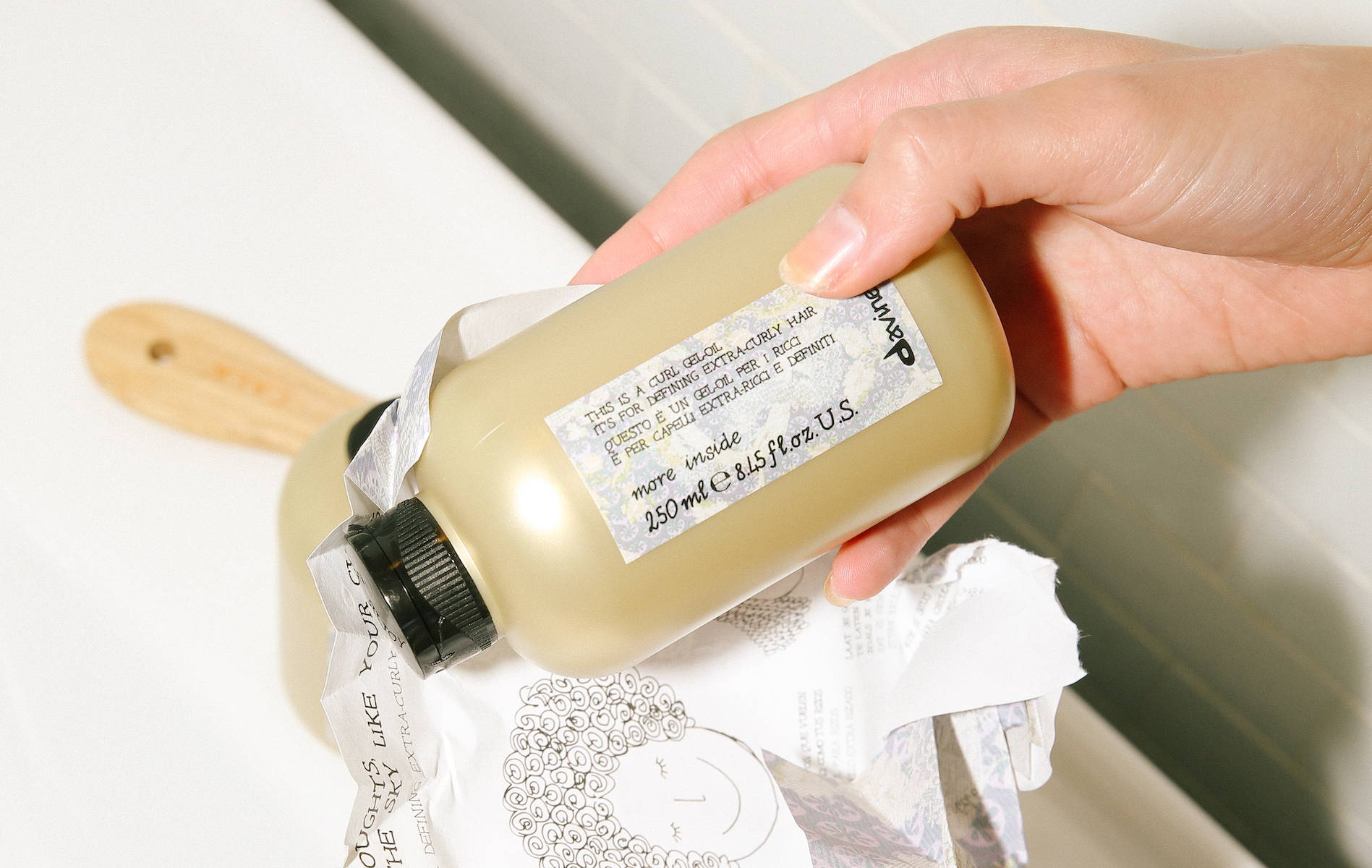Pay with Klarna
Free Carbon Neutral Shipping On Orders $75+, Plus Free Samples!
Whether you have loose waves or tight, coiled ringlets, there are some common reasons why curly hair requires special care to look its best.

So now that you know why curly hair requires a unique list of care requirements, how do you get started helping your curls look their best? By following the curly girl method and focusing on using the right moisturizing products, making small adjustments to your hair care routine, and practicing smart aftercare. Let’s get started.
Nothing says healthy, beautiful hair like a head of shiny, bouncy curls. While curls and waves are often envy-inducing, out of all the hair types, those with naturally curly hair know their strands require a little extra effort when it comes to styling. These are the best hair care tips for naturally curly hair.
A recent trend in curly hair care is the “pre-poo”. This refers to a protective treatment applied as the first step of your shower routine, usually with hair oil, nourishing hair butter, or even household recipes that use coconut or avocado oil. This provides a nourishing, protective layer for your hair, to stop your shampoo from stripping away too much essential moisture. Check out our blog post “What is Pre-Poo and Why You Should Use It” for more on this nourishing hair care step.
Since natural hair and curly hair are more prone to knots and tangles, consider sectioning your hair in the shower. Regardless of your curl type, dividing your natural curls into sections allows for better product distribution and ensures that each strand gets the attention it deserves. This method not only helps you apply styling products more evenly but also makes it easier to detangle and prevent breakage for your best hair.
Whether you use shampoo or choose to co-wash, always use cool water on wash days. Hot water can strip your hair of its natural oils, promoting frizziness and leaving it dry. On the other hand, cool water helps to seal the hair cuticles, locking in moisture and enhancing the natural definition of your curls. Always follow up with a conditioner that’s free of silicones. The right products for curly hair are always silicone-free. Distribute evenly to ensure each strand gets the moisture it needs.

Hair plopping is exactly what it sounds like. Once you’ve washed and conditioned your hair, simply plop your hair down onto a microfiber towel (or old t-shirt), wrap your hair up, and let it dry. You’re essentially letting the microfiber towel do the styling work, absorbing excess water without roughly drying your hair, which can lead to frizziness and a broken curl pattern.
Cotton pillowcases can leave you with frizzy, damaged hair strands. Satin and silk pillowcases let your hair glide smoothly across the surface, reducing friction and potential damage and frizz. While those with wavy or curly hair should definitely consider silk and satin pillowcases to keep their hair intact and frizz-free, they can be beneficial to every hair type.
The delicate care required to maintain curly hair is especially important when you’re brushing it. Techniques can vary depending on the thickness of your hair or tightness of your curls, but try to follow these general steps for combing curly hair correctly:
Finding products that work with your curls is a delicate balance of trial and error that can take time to master. So we've put together a list of curl-loving products to address all your curly hair needs.
Proper curl care focuses on moisture and hydration. For beautifully defined curls, wash your hair with a curl shampoo with a moisturizing formula that gently cleanses (making it soft and enhancing the volume) without compromising its natural texture. Use a sulfate-free formula, to avoid extra dryness and damage and swap in a clarifying formula once a month.
Follow every shampoo with a curl conditioner. Engineered with a blend of nourishing ingredients, these conditioners tame frizz while enhancing the natural bounce and definition of your curls. They help define the natural curl pattern, leaving your hair soft, manageable, and ready for styling. And since this doesn’t always provide enough moisture, scrunch a leave-in conditioner into your curls from mid-lengths to ends. Additionally, add a weekly hair mask for curly hair.
Build-up on your scalp can lead to things like blocked follicles and a dry hair texture.Even those with very coily hair can benefit from scalp exfoliation. Salt scrubs, infused with sea minerals, work wonders in adding volume and accentuating the natural curls, creating a beach-inspired look. They help define each curl without weighing them down, allowing for a bouncy and effortlessly stylish finish. Use a salt scrub weekly to exfoliate your scalp and curly hair.

Another deep conditioner to use in your curly hair routine is hair milk. These lightweight, hydrating formulas are designed to nourish and define curls without weighing them down. Packed with moisture-rich ingredients like coconut oil, shea butter, and aloe vera, hair milks provide the perfect balance for curly hair, enhancing natural curls while taming frizz. Our hair milk even protects your hair from heat damage. Spray on towel-dried hair, and style as usual.
A curl cream not only helps to detangle and define your curls, but also help to fight frizz and protect from heat damage, without weighing your hair down. If your hair is prone to being really frizzy, or you live in a more humid environment, try a curl controller for healthy curls, even in cases of high humidity.
In addition to the above hair tips, you should avoid the following when caring for your curly hair:
Wondering how often you should wash your hair? Overwashing your hair can take you down some undesirable paths: Stripping your scalp of too many essential natural oils can either cause oil production to go into overdrive or leave you with lifeless and dry hair. Since curly hair is already at risk of dryness, you want to make sure you’re not washing your hair too frequently. People with curly or textured hair can usually get away with washing their hair only once a week — use this as a start and keep an eye on how your hair responds, adjusting as needed.

It’s also important to add deep conditioning treatments and hair masks into your routine once a week. These intensive treatments provide your hair with extra hydration, nourishment and repair.
We’ll keep saying it: the key to beautiful and healthy curls is proper moisture! Make sure you’re not skipping conditioner after you wash your hair, and swap in extra-nourishing hair masks as needed.
It’s a general rule of thumb that the curlier your hair, the more you should try to avoid using heat, which can strip away too much essential moisture and leave you with dry locks and a broken curl pattern. But if you must heat style, start by letting your locks air dry for a bit. Starting to heat style super wet hair makes it more likely that you will damage it, as you’re exposing it to heat for longer. Make sure you’re using a heat-protectant product and giving your curls enough moisture before and after. When you do have to blow dry, use a diffuser attachment on your blow dryer that can distribute air more evenly throughout your curls, minimizing frizz, breakage, and heat damage.
For those who are lucky enough to be gifted with naturally curly hair, these enviable locks usually come with a requirement: taking the time to learn how to properly care for them. But this doesn’t mean big changes for your routine or wallet! Just be sure to stock up on the right curly hair products (giving your hair the adequate moisture and styling products it needs), try to avoid heat when possible, and invest in proper products like wide-tooth combs and silk or satin pillowcases. And styling tricks like plopping or good air drying can be a lifesaver when it comes to finding easy solutions to make your curls and waves look their best. Another key part of maintaining healthy hair is regular salon visits — even if you’re trying to grow your curls out, getting regular trims will stop split ends from working their way up your hair and damaging already delicate curls. If possible, try to find a salon that either specializes in curly hair or an individual stylist who’s comfortable helping you reach your curl goals. If you have any additional tips and tricks for maintaining healthy and beautiful curls, let us know in the comments below!
by Morgan Hanson, featured contributor
Leave a comment
Comments will be approved before showing up.